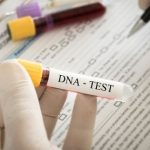A new study failed to provide answers after pursuing a genetic explanation for why one identical twin developed multiple sclerosis while the other stayed healthy. Researchers created complete genetic blueprints for a pair of identical twins, looking for differences that might explain why one developed multiple sclerosis and the other did not. According to researchers there were no traces of a discrepancy in the twins’ DNA. Scientists found no smoking gun when they compared amount of gene activity between the twin with multiple sclerosis and the twin without. The results appear in a study published on April 29 in Nature.
According to Stephen Kingsmore, a geneticist at the National Center for Genome Resources in Santa Fe, N.M., and leader of the new study, “We looked under a lot of rocks and we found no differences that we could replicate.” Kingsmore went on to say that the findings “points to some novel environmental trigger that must be very important to the disease. We don’t know what it is.”
This study was small; it examines only three pairs of identical twins and one type of immune cell known to be involved in multiple sclerosis. A telling difference between sickness and health might be found in other types of cells, says Esteban Ballestar of the Bellvitge Biomedical Research Institute in Barcelona, Spain. Ballestar went on to say, “They are closing a door here, but I think, perhaps, the door should be open.” Multiple sclerosis is a disease where the immune system attacks and damages the myelin sheath that helps speed electrical communication between nerves, this is the equivalent of scraping the coating away from an electrical wire. The damage results in pain and symptoms such as loss of coordination and vision.
In the study, Kingsmore and his colleagues determined the entire genetic makeup of the immune cells called T cells from the female twin who had developed multiple sclerosis at age 30 and from her twin who had remained healthy. It was important that the twins were now old enough that the healthy one is not likely to develop the disease.
Identical twins share the same genetic makeup (it is believed that they have identical DNA), and the researchers confirmed that both women carried variants of genes already known to increase the risk of getting multiple sclerosis. Scientists had thought that maybe the sick twin had developed an additional mutation in her DNA that finally triggered the disease. But the team found no such mutations.




